The people who are serious about the hobby and have large aquariums use a sump filter in a large acrylic box or glass aquarium, typically located below the aquarium in the cabinet. This box typically has three basic sections (often the middle section is partitioned into several sub-sections). The first section of this filter is normally either filter bags, polyester floss pads or open cell urethane foam pads which mechanically filter the water. Sometimes this section is alongside the other sections and sometimes this section is on top of the other sections.
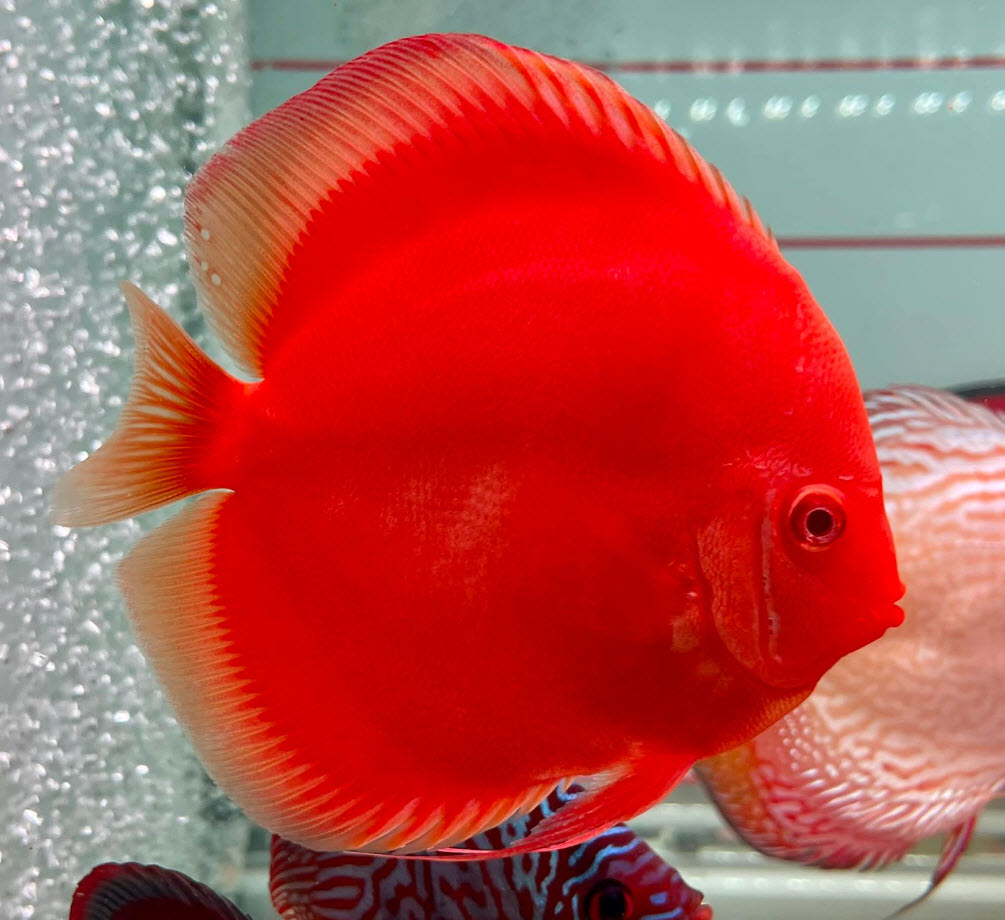
Types of Sumps
Then, based on what is in the middle section, there are five basic types of freshwater sump filters:
- If the water enters a second chamber where 100% of the biomedia is unmoving and submerged this is a submerged static media sump filter. This is the most common type of sump filter.
- If the water enters a second chamber where most of the biomedia is unmoving and in air this is a trickle sump filter. A trickle sump is very roughly only about roughly 25% of the efficiency of a static submerged bed sump.
- If the water enters a second chamber where some of the biomedia is in air and some of the media is submerged this is a wet/dry sump filter. This is roughly 50% of the efficiency of a static submerged bed sump.
- If the water enters a second chamber where the biomedia is moving and submerged this is a fluidized bed sump filter. Millions of dollars of aquaculture research for fish farms has established this is the most efficient type of filter, with an efficiency about twice that of a static submerged bed sump.
- Some people use a hydroponic area in their sump with plants or algae and a grow light of some sort. These systems can remove small amounts of nitrates if they have enough light intensity and the proper plants (emergent plants are much preferred to submerged plants).
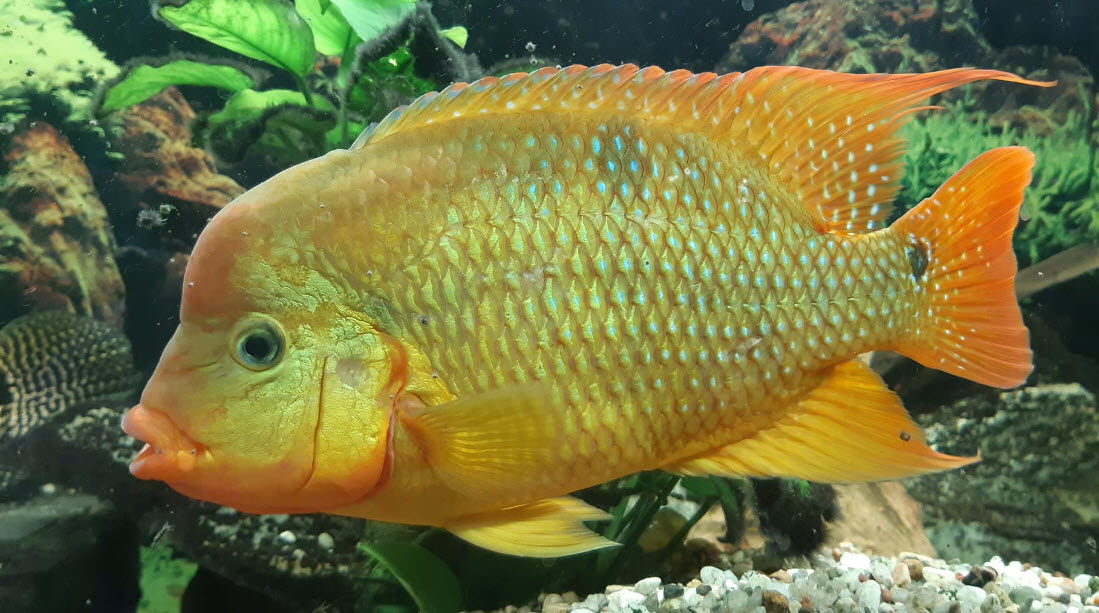
Typically, sump water then enter a third section where there is a water pump which pumps the water back into the aquarium. Most commercial units do not include a pump. Be careful in selecting a pump for the return out of a sump. There can be some degree of head (3 to 5 foot) which requires a pump more powerful than most cheap aquarium pumps.
Note these sump filters are typically custom designed and custom built in hundreds of variations and combinations. Every hobbyist has their own idea as to the “best” sump filter design. Other sumps aren’t located under the aquarium but rather over the aquarium. Still other sump set-ups are in another room or a garage. Some even put sumps in the basement of a home with aquariums overhead. These basement designs require careful pump selection due to the high head,
The best and cheapest option is to buy a 40 gallon breeder tank from your LFS. Then buy off EBay a Fiji Cube Sump Kit Refugium Baffle Kit – 40 Gallon Breeder $119.99 + $9.99 Shipping. Anyone, even the DIY challenged, can follow the directions on this easy kit.
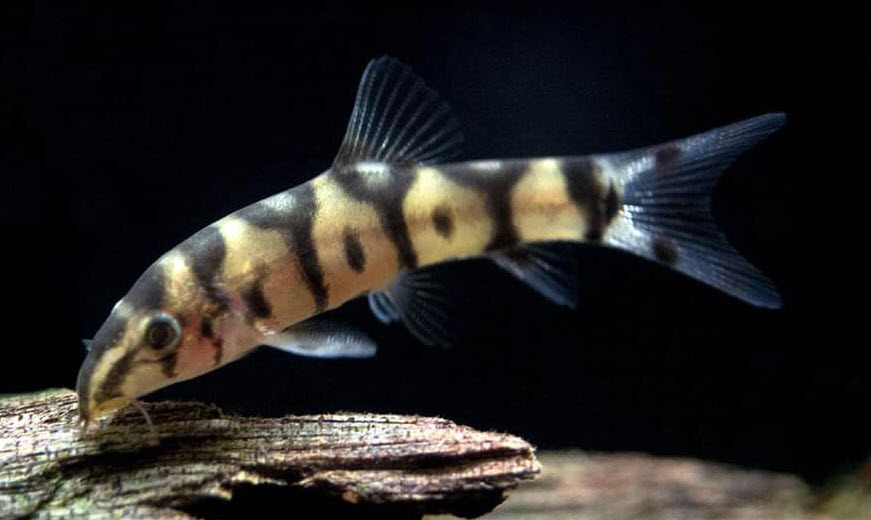
Sump Biomedia
A very important consideration in building a sump is the biomedia one is going to use in the sump. Filter biomedia vary by the amount of effective area they give for beneficial bacteria to grow on. The square feet of surface area per cubic foot of biomedia (ft2/ft3) actually available for colonization by beneficial bacteria is:
| Biomedia | "Effectief" oppervlakte ft²/ft³ | "Effectief" oppervlakte m²/m³ | ft³ om 5ft² te krijgen | m³ om 0,46m² te krijgen | ft³ om 100ft² te krijgen | m³ om 9,29m² te krijgen |
|---|---|---|---|---|---|---|
| Bewegend K1-media (60% lading in bioloog) | 540 | 1782 | 16 | 0.45 | 320 | 9.06 |
| 30 PPI-schuim in potfilter of bioloog | 340 | 1122 | 25 | 0.71 | 500 | 14.16 |
| 30 PPI schuim powerhead aangedreven | 340 | 1122 | 25 | 0.71 | 500 | 14.16 |
| 30 PPI schuim luchtaangedreven | 300 | 990 | 29 | 580 | ||
| Kunststof pannenspons | 280 | 924 | 31 | 620 | ||
| Statische K1 media | 260 | 858 | 33 | 660 | ||
| 20 PPI-schuim in potfilter of bioloog | 260 | 858 | 33 | 660 | ||
| 20 PPI schuim powerhead aangedreven | 260 | 858 | 33 | 660 | ||
| 20 PPI schuim luchtaangedreven | 230 | 759 | 38 | 751 | ||
| Ondergrindfilter aangedreven door powerhead | 140 | 462 | 62 | 1240 | ||
| Aquariumgrind in potfilter of bioloog | 140 | 462 | 62 | 1240 | ||
| Luchtaangedreven ondergrindfilter | 120 | 396 | 72 | 1440 | ||
| Blauwe Matala-pads | 120 | 396 | 72 | 1440 | ||
| 1/8 inch tuin puimsteen of perliet | 100 | 330 | 86 | 1720 | ||
| Bio-ballen | 100 | 330 | 86 | 1720 | ||
| Alfagrog | 80 | 264 | 108 | 2160 | ||
| 1/2 inch lavasteen | 60 | 198 | 144 | 2880 | ||
| Seachem-matrix | 60 | 198 | 144 | 2880 | ||
| Biohome Ultimate | 40 | 132 | 216 | 4320 | ||
| Keramische ringen | 40 | 132 | 216 | 4320 | ||
| Keramische ballen | 30 | 99 | 288 | 8.16 | 5760 | 163.11 |
| Geëxpandeerde kleikorrels | 30 | 99 | 288 | 5760 | ||
| Kubieke inches om 5ft² = (5/EA)x1.728 100ft²=(100/EAx1.728) te krijgen | ||||||
The 5 square feet numbers will give one ammonia oxidation for one pound of fish. The 100 square feet numbers will give one crystal clear water with one pound of fish. These numbers were roughly substantiated by actual experiments done on media under aquarium conditions.
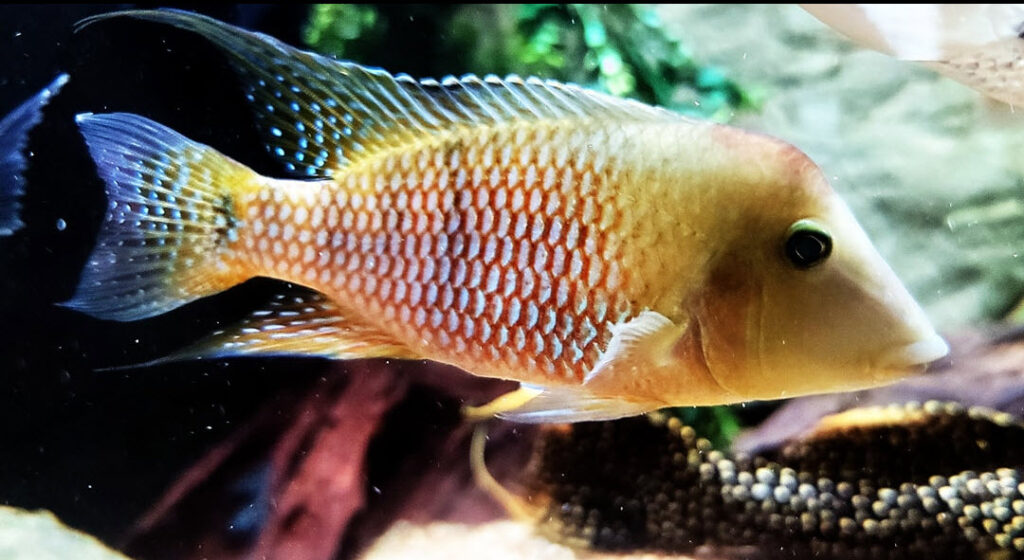
Calculating How Many Fish a Sump can Handle
Now a simple illustration is in order with using mathematically calculated surface area to size a filter and select a filter media. Elsewhere we establish that fish are very healthy and well taken care of by a biofilter media which has very roughly 100 square foot of biomedia surface area per pound of fish. And, since there are 454 grams to one pound, very roughly 454/82 = 6 five-inch fish are in a pound of fish.
| Lengte inch | Lengte Centimeter | Gewicht Gram | Metabolisch gewicht gram |
|---|---|---|---|
| 1 | 2.54 | 0.32 | 1 |
| 1.25 | 3,18 | 9.64 | 2 |
| 1.5 | 3.81 | 1.1 | 3 |
| 1.75 | 4,44 | 1.8 | 5 |
| 2 | 5.08 | 2.5 | 7 |
| 2.25 | 5,72 | 3.73 | 10 |
| 2.5 | 6.35 | 5.12 | 14 |
| 2.75 | 6,98 | 6.81 | 18 |
| 3 | 7.62 | 8.86 | 22 |
| 4 | 10.16 | 21 | 47 |
| 5 | 12.7 | 41 | 82 |
| 6 | 15.24 | 70.5 | 113 |
| 7 | 17.78 | 112 | 140 |
| 8 | 20.32 | 167 | 167 |
| 9 | 22.86 | 239 | 239 |
| 10 | 25.4 | 328 | 328 |
| 12 | 30.48 | 581 | 581 |
A typical 20-gallon sump might have 12 gallons of submerged biomedia in it, or 1.6 cubic feet.
So foam in the submerged 20 gallon biomedia sump will support 1.6 x 400/100 or 6.4 pounds of fish or 35 five-inch fish. Plastic pot scrubbers will support 1.6 x 200/100 or 3.2 pounds of fish or 18 five-inch fish. Matrix, Biohome or ceramic rings in the submerged media will support 1.6 x 30/100 or 0.48 pounds of fish or 3 five-inch fish. 35 versus 18 versus 3!!!! This is really a very astonishing calculation all sump owners should do.
Note that for reasons we will delve into under fluidized bed sumps a 20-gallon fluidized bed sump filled with 1.6 cubic feet of 60% K1 media and properly circulating with air will filter the water and keep in excellent health an astonishing 60 five inch fish.
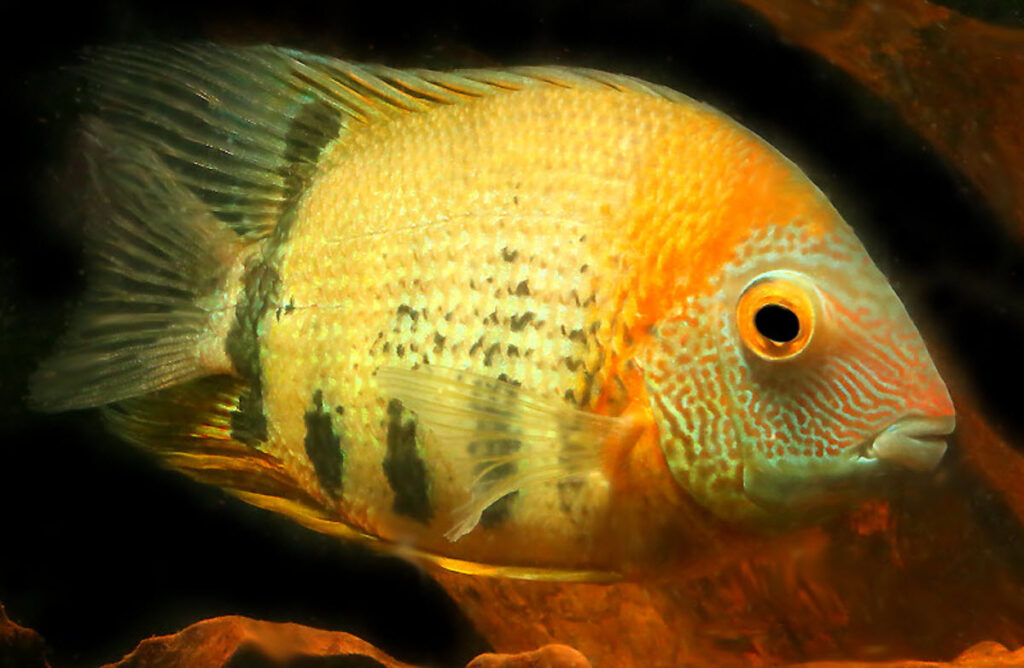
Test of Filtration Media
Let’s put that data into a table of how many five inch fish (82 grams metabolic weight) a 20 gallon sump (60% filled with media) can support at a level of giving crystal clear water:
- Fluidized K1 60
- Foam 35
- Pot Scrubbers 30
- Static K1 Media 27
- Matrix, BioHome 5
- Lava Rock, Rings 3
This is simply very incredible data.
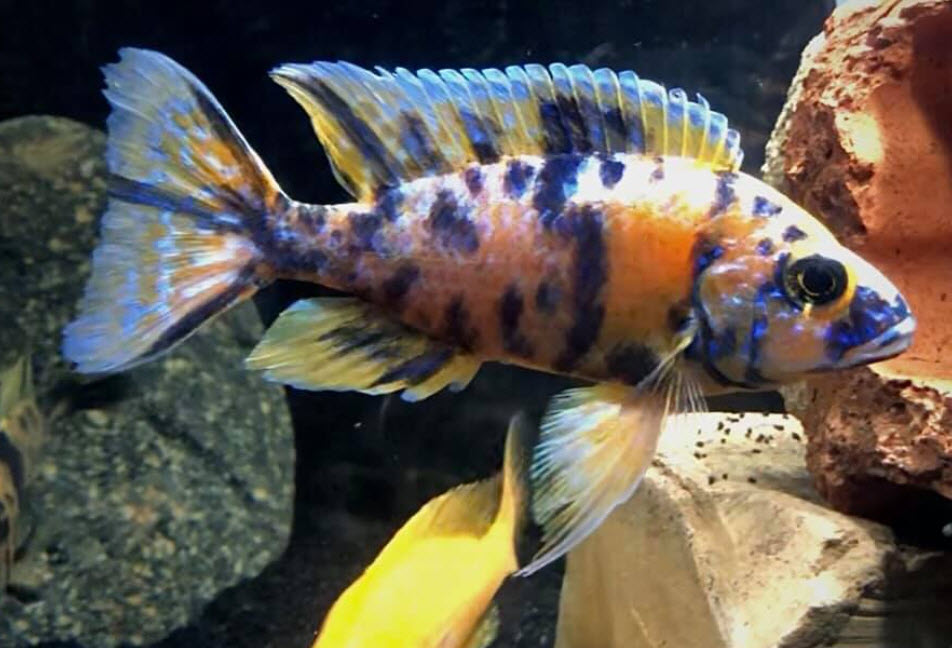
If one has a large tank and wants large fish what do the numbers say? Let’s go to a 40 gallon sump with 60% of the sump being media. The number of ten inch fish (328 grams metabolic weight) which can be well supported (crystal clear water) by the media in such a 40 gallon sump becomes:
- Fluidized K1 7
- Foam 4
- Pot Scrubbers 4
- Static K1 Media 4
- Matrix, BioHome 0
- Lava Rock, Rings 0
Again, pretty mind boggling data.
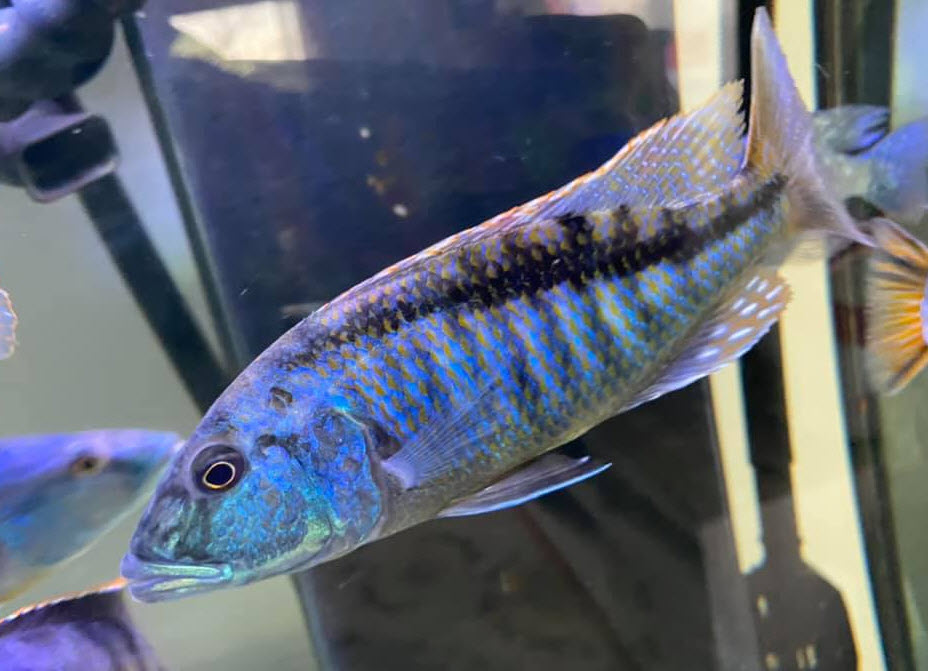
Sump Safety Features
There are five specific safety features needed in any sump:
- If one has mechanical filtration the sump needs to be designed to prevent overflows it the mechanical media plugs up. To prevent this just make sure the partition for the mechanical filtration is a minimum of half an inch lower than the rim of the sump.
- If one does not have a drilled tank then one must use a siphon based overflow design. There needs to be two siphon to external weir overflows with clear PVC fittings to prevent failure.
- With a weir drilled design one needs to be careful the weir doesn’t plug and overflow the main tank. Just make sure the weir is large and open on top.
- One needs the proper design to prevent a sump from going dry and burning out a pump. This fix consists of simply making sure the pump is in a chamber whose water level is shared with at least 80% of the sump.
- One needs a proper design to prevent the sump from overflowing during a power outage. This fix involves check valves a vacuum break holes.
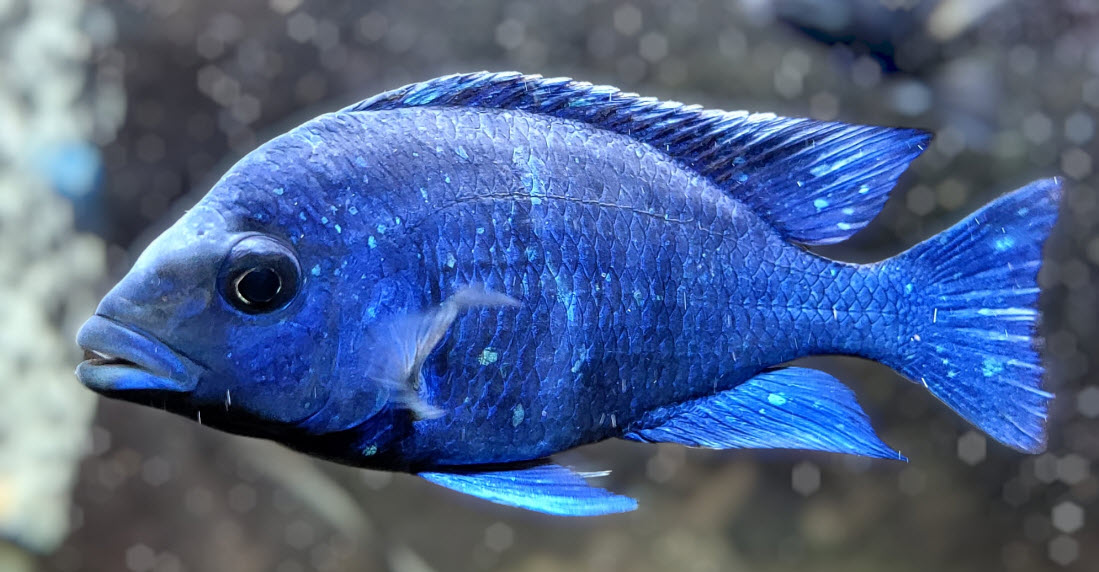
Sumps are prone to flooding if not set up correctly. There are two distinct types of flooding involved. One is where the sump pump moves the water in the sump into the aquarium and the overflow or drilled hole is not functioning. Here the aquarium itself overflows. The other is where the aquarium drains into the sump when the pump is off and floods the sump.
All of the sump designs in this section have a water level which goes at an equal level across all or most of the sump chambers. This design prevents pumps from burning out if the water level drops in the system due to evaporation. But if the overflows or drilled holes malfunction this can cause an aquarium to overflow. This is why we emphasize redundancy in overflows with at least two overflows per aquarium.
The alternative is to have a small pump chamber which is separate from the rest of the sump with its own water level. This can cause pump burn out but it prevent overflowing the aquarium if the overflow malfunctions.
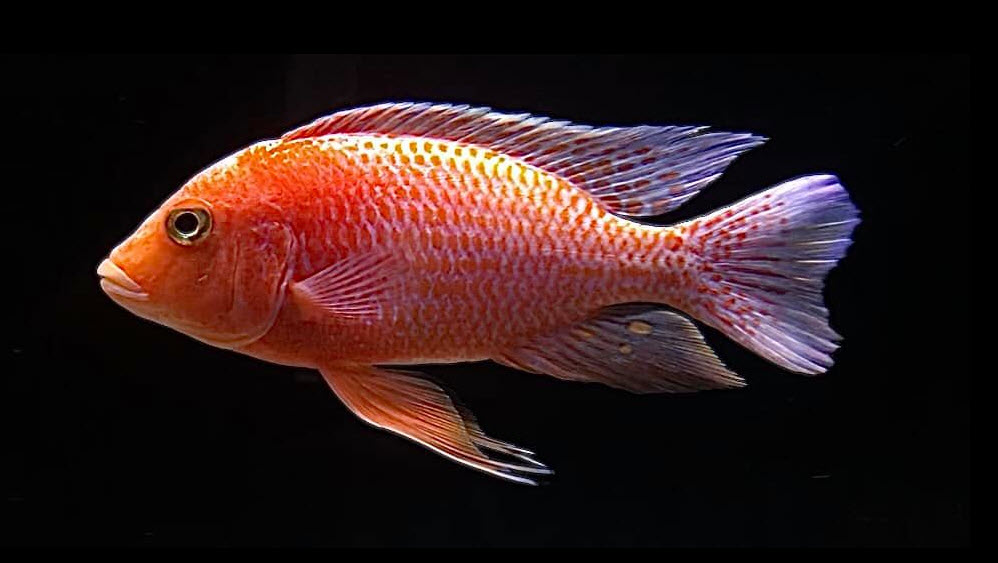
The second type of flooding is where the sump overflows. In any sump when the power goes out or a pump fails the water from the aquarium can siphon down through the pump in a reverse flow.
This reverse flow can flood the sump. The possibility of this is easily prevented with two courses of action:
- Drill a small one eighth inch hole in the return flow to the aquarium at the water level. Water will flow out this hole during normal operation. If the pump stops the hole allows air to enter the return piping and break the siphon.
- Add a check valve in the return, preferably oversize. This prevents rapid siphoning from overcoming the air hole. Note that only a check valve without any siphon break holes at the waterline is not a wise idea as invariable a small amount of debris will hold the check valve open just a little bit. A flow to the sump and flooding will still occur.
Examples of Sumps
Here are just a few of the aquarium sump filter designs which will work quite well:
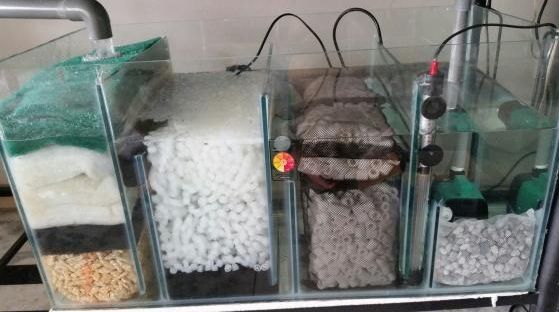
There are eight types of submerged media with one fluidized bed

Another sump with eight types of submerged media and one fluidized bed
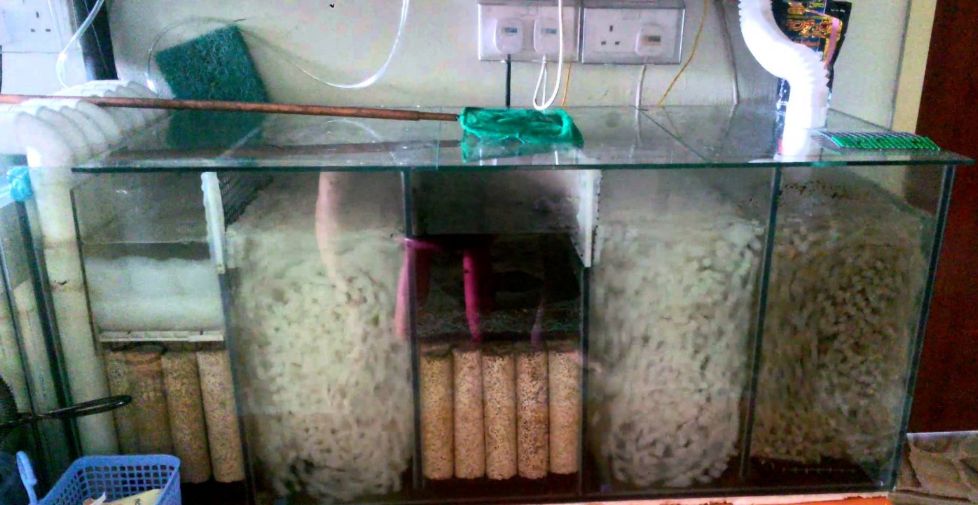
Three fluidized beds with 4 types of submerged media
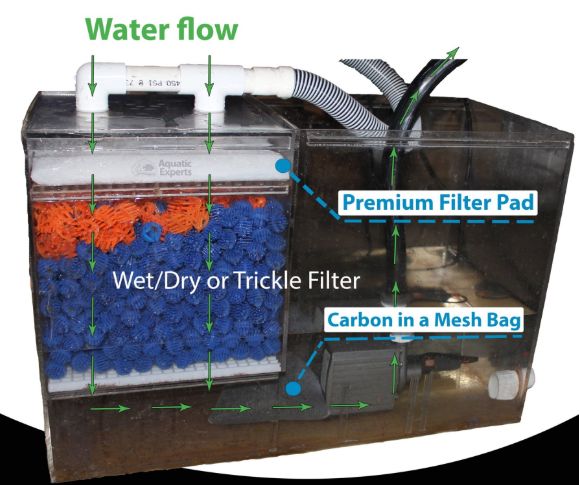
Trickle filter sump schematic
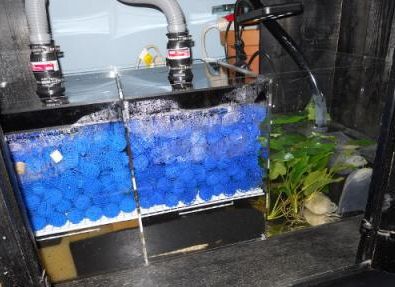
Wet dry sump filter for aquariums with a refugium
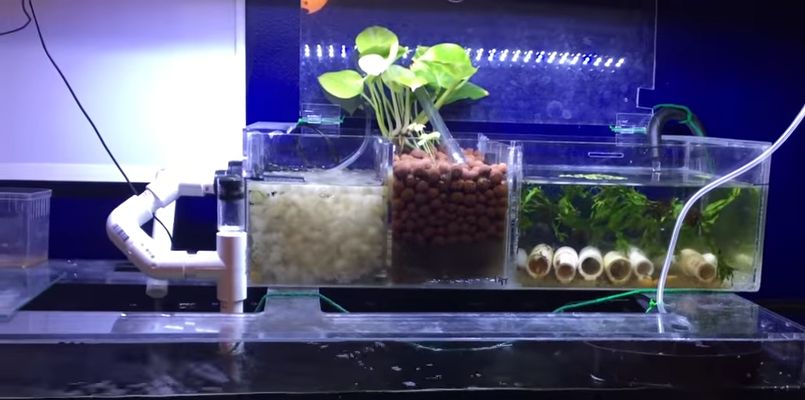
This is an over-the-aquarium planted sump with a small fluidized bed
Note the use of many types of biomedia is totally unnecessary and serves no purpose what-so-ever. But EVERYONE does it. All biomedia do the same thing, biofiltration. They just vary in how efficiently they do it.
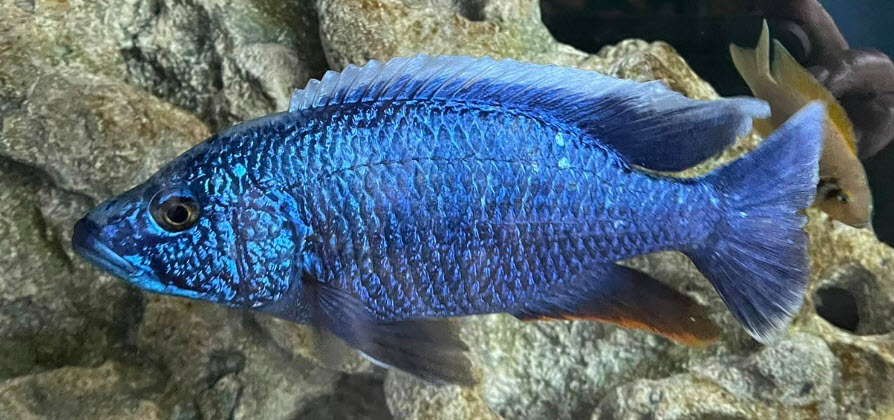
What NOT to do
The sump below is a fine example of what NIET to do. There is a lot of empty volume, little biomedia, and the biomedia is largely totally ineffective ceramic media.
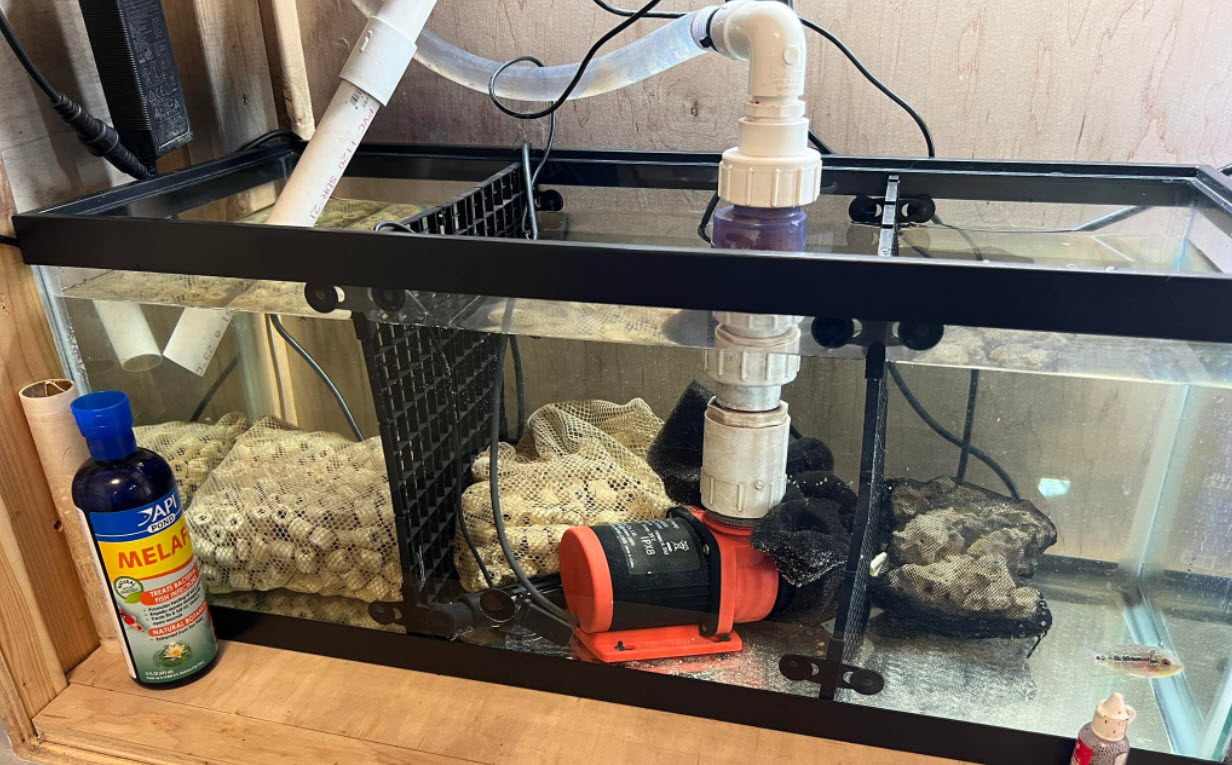
Over-flows
Many get confused in sumps over the issue of how to get the water from the aquarium to the sump. If you have a drilled aquarium the issue is easy. If you don’t have a drilled aquarium the issue becomes more difficult. There are many YouTube videos on making overflows. The King of DIY Joey Mullens has some good designs (His book is simply amazing!).
Some of these designs can be found at this link:
De selectie van een pomp voor een opvangbak is eigenlijk een behoorlijk lastig proces. Voor hulp zal deze link helpen:
En het sanitair voor een opvangbak is erg belangrijk, inclusief de maat van de leidingen. Dit wordt behandeld in deze link:
14.5 Loodgieterswerk en leidingen
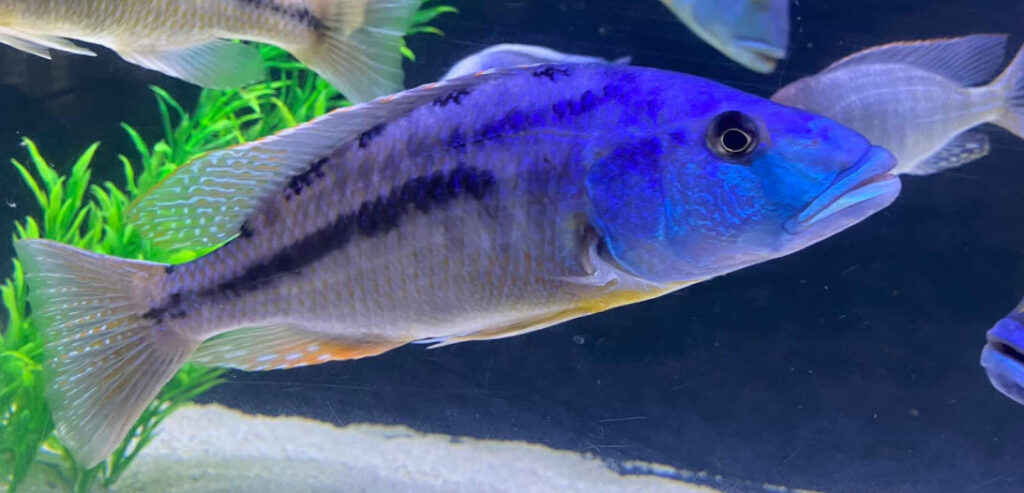
Many want to go into sumps in more depth. Here are links to other articles on sumps:
8.6.2. Statische biologische filters
Voor degenen die geïntimideerd zijn door de complexiteit van een wervelbed, is er een ontwerp van een opvangbak, een "schuimopvangbak" genaamd, die heel eenvoudig is qua ontwerp en bediening. Het artikel over dit soort putten is:


